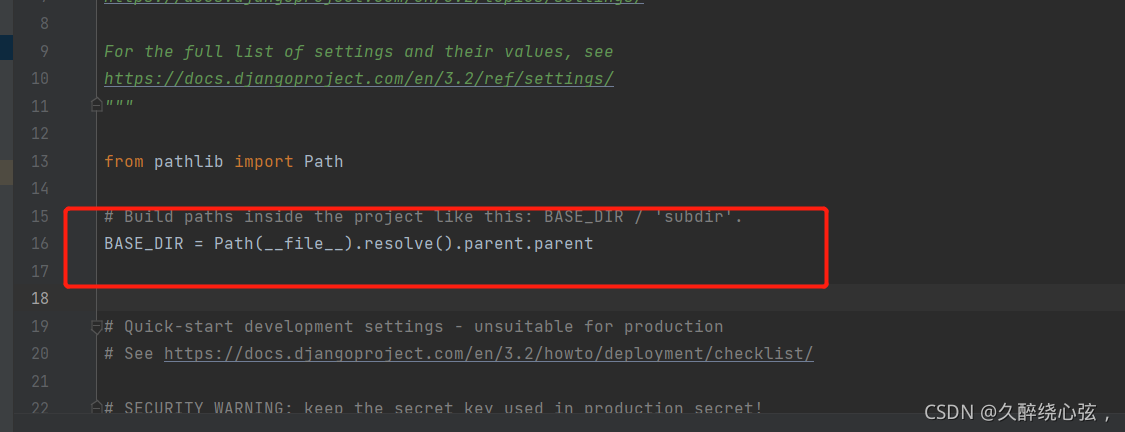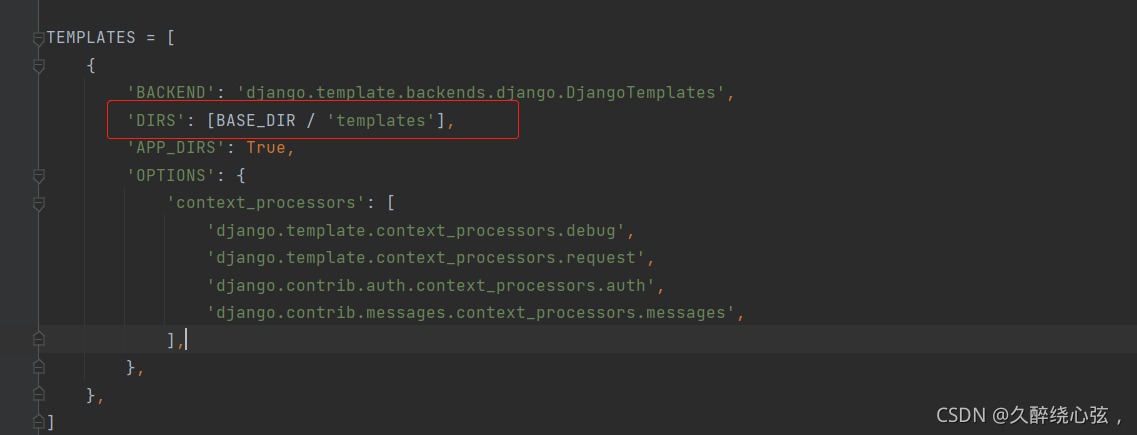Python Django模板系统详解
目录
设置模板路径
模板变量
引用静态文件
总结
设置模板路径在django项目下创建templats文件来存放html文件

为了减少模板加载调用过程及模板本身的冗余代码,Django 提供了一种使用方便且功能强大的 API ,当使用模板加载API时,需要将模板路径告诉框架,在项目settings.py中设置模板路径,如图:
settings.py中的BASE_DIR为项目路径。

在TEMPLATES中的BIRS来设置模板路径

templates下编写index.html写入如下代码:
!DOCTYPE html>
<html lang="en">
<head>
<meta charset="UTF-8">
<title>首页</title>
</head>
<body>
<h1>hello world!</h1>
</body>
</html>
视图文件view.py中编写如下代码,通过render渲染html文件:
from django.shortcuts import render
# 获取对应模板通过render渲染
def index(request):
return render(request, 'index.html')
结果如下:

Django模板中使用{{ }}来表示变量:
{{ 变量名 }}:变量名由字母数字和下划线组成,其值可以是任何数据类型
举例如下:
当模板引擎遇到变量时,会计算该变量,并将其替换为结果
<!DOCTYPE html>
<html lang="en">
<head>
<meta charset="UTF-8">
<title>首页</title>
</head>
<body>
<h3>{{ content }}</h3>
<h3>{{ info }}</h3>
</body>
</html>
view.py中render渲染时通过context以字典形式传递值:
from django.shortcuts import render
def index(request):
content = 'hello world'
info = {'name': 'test', 'age': 18}
return render(request, 'index.html', context={'content': content, 'info': info})

模板中支持以下语法:
<!DOCTYPE html>
<html lang="en">
<head>
<meta charset="UTF-8">
<title>首页</title>
</head>
<body>
<h3>{{ content }}</h3>
<!-- 获取字典中key的值 -->
<h3>{{ info.name }}</h3>
<!-- 通过索引获取列表的值 -->
<h3>{{li.1}}</h3>
<!-- 调用不带参数的方法 -->
<h3>{{ fun }}</h3>
<!-- 获取对象属性 -->
<h3>{{ obj.name }}</h3>
</body>
</html>
view.py:
from django.shortcuts import render
def index(request):
content = 'hello world'
info = {'name': 'test', 'age': 18}
li = [1, 2, 3]
class Obj:
def __init__(self, name):
self.name = name
M = Obj('对象属性:MING')
def fun():
return '方法:fun'
return render(request, 'index.html', context={'content':content,'info': info,'li': li,'fun': fun,'obj': M})

首先在项目根目录下创建存放静态文件的目录,并在settings中设置路径,如下:

STATIC_URL = '/static/'
为静态文件引用前缀,当引用文件时代表的是文件根目录,如下:
static代表的是statics
<!DOCTYPE html>
<html lang="en">
<head>
<meta charset="UTF-8">
<title>首页</title>
</head>
<body>
<!-- 图片 -->
<img src="/static/img/123.jpg" alt="">
</body>
</html>
view.py:
from django.shortcuts import render
def index(request):
return render(request, 'index.html')

本篇文章就到这里了,希望能够给你带来帮助,也希望您能够多多关注软件开发网的更多内容!